To remove a chain link fence, specific instruments are required, and one must follow a sequence of simple procedures. This entails initial preparation, removing clamps and bars, and finally, taking down the fence.
If you have an old, unattractive chain link fence, it may be time to replace it with a new one. Upgrading your fence will improve its appearance and functionality. But before you can install a new fence, you must first remove the old one.
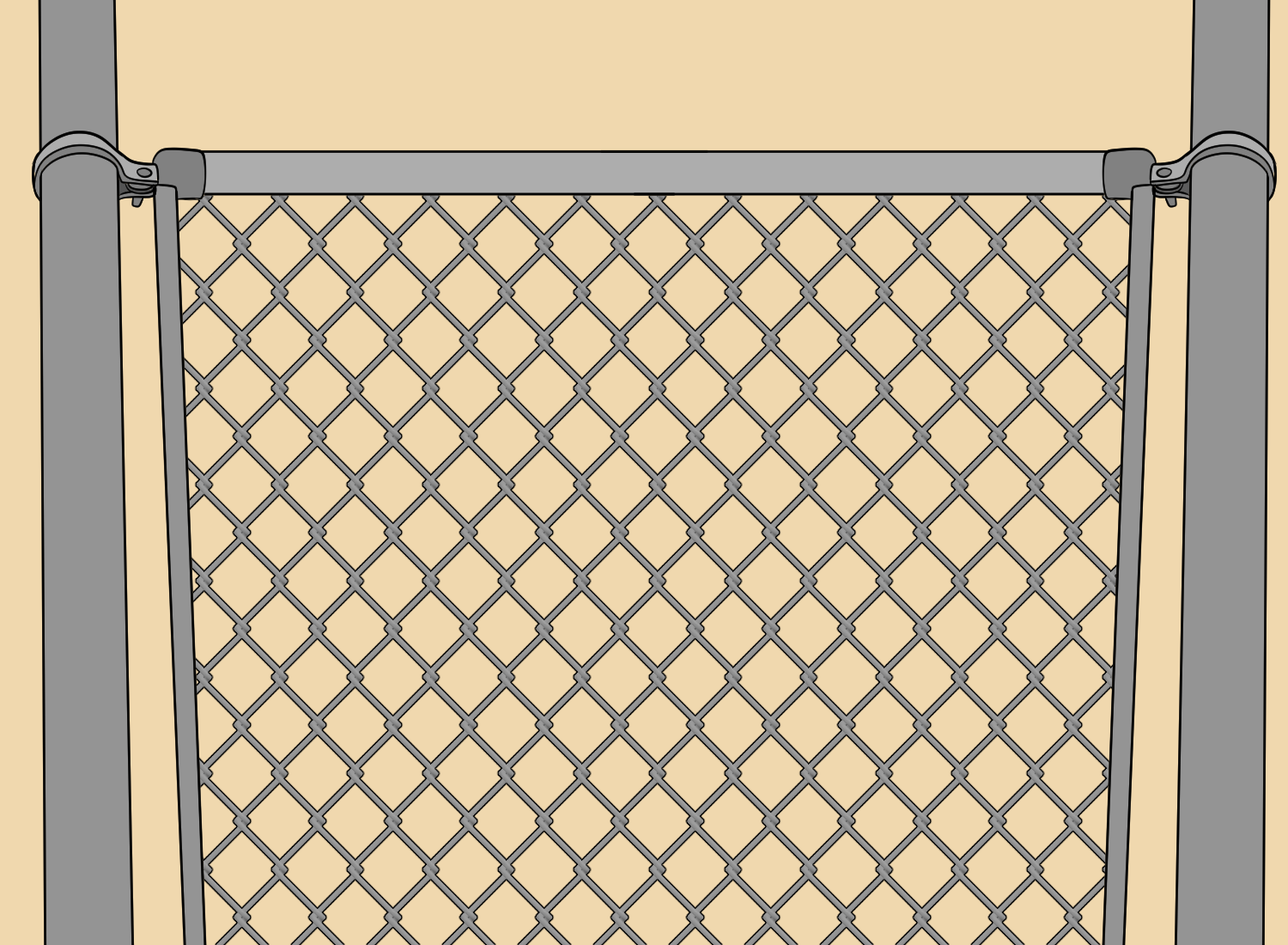
What we cover
ToggleSteps to remove a chain link fence
If you want to remove your chain link fence, you’ll need to follow a few steps. Here’s a guide on how to remove a chain link fence.
Step 1: Remove clamps and tension bars
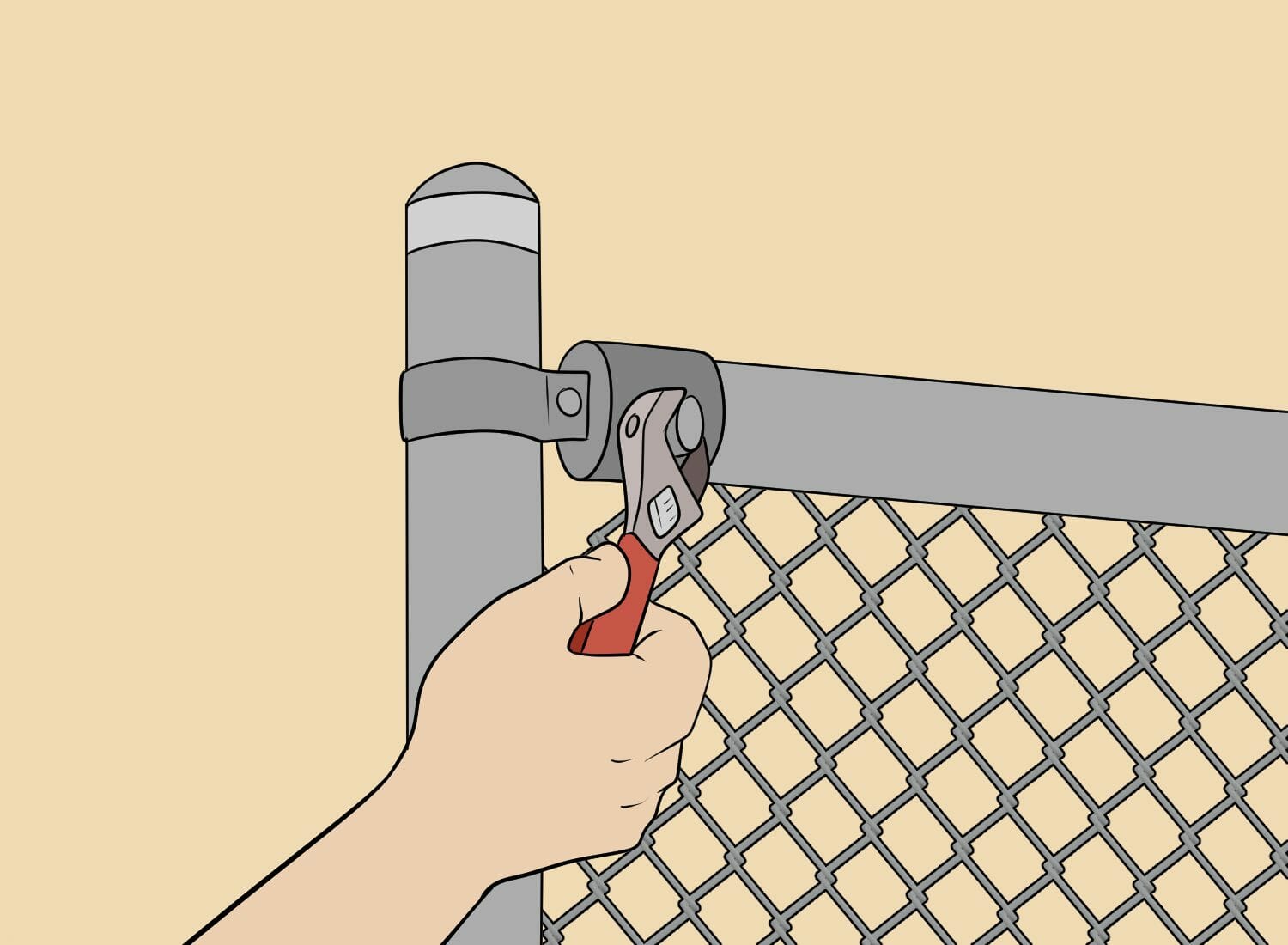
To start, detach the clamps from the corner posts that hold the chain link fabric. Use a wrench to remove the nuts and bolts that connect the tension bars to the posts, and place the clamps, bolts, and nuts in the bucket.
After the clamps are detached, slide the tension bars out of the chain links and store them in the bucket.
Step 2: Remove the top rail and post caps
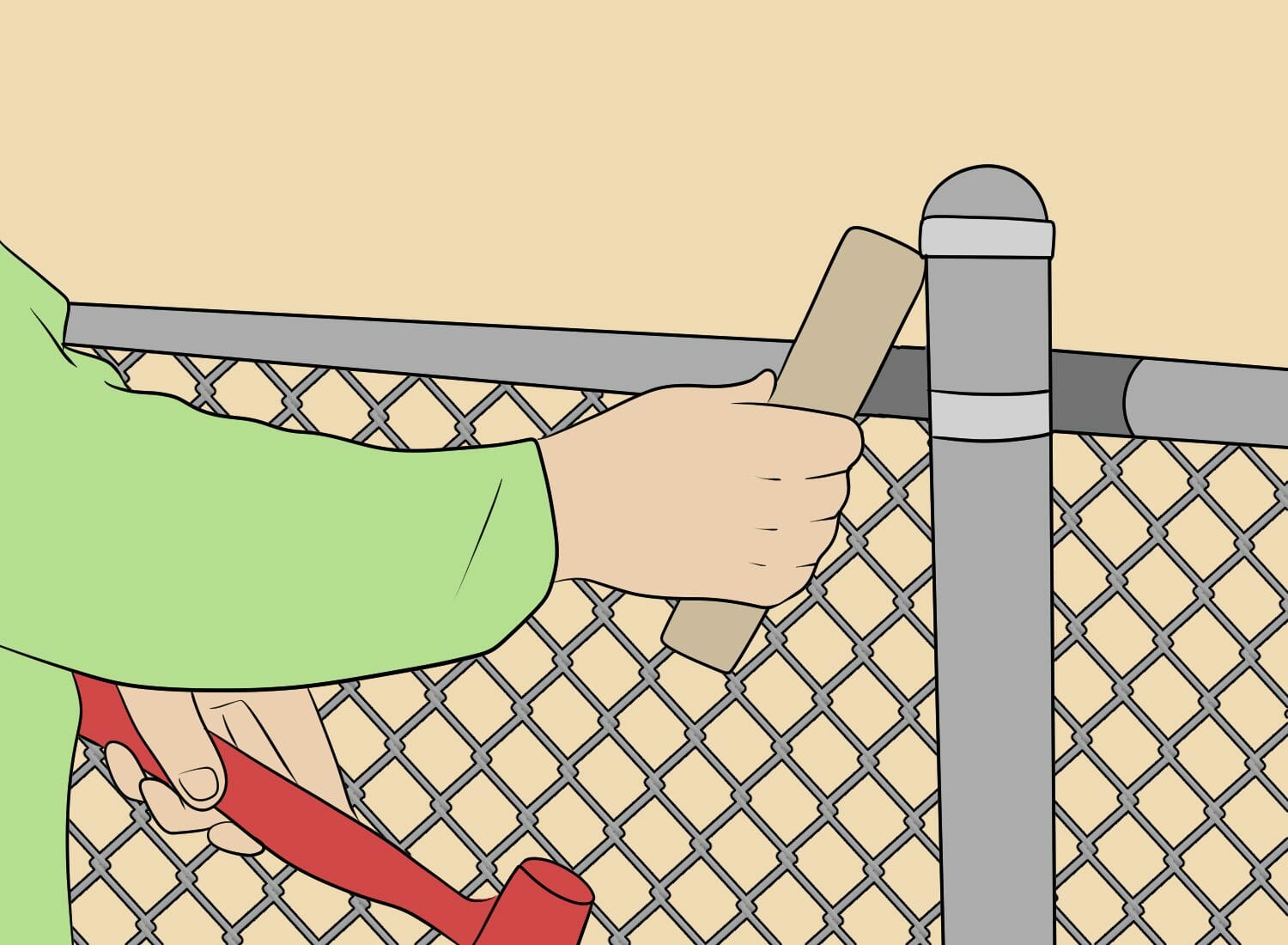
After removing the chain link fence, take out the top rail. Slide it out and remove any caps attached to it using a wrench. If you can’t remove the cap, tap a block of scrap wood under it with a hammer to loosen it.
If it still won’t come off, use a reciprocating saw or angle grinder to cut the top of the post off.
Step 3: Remove fence posts
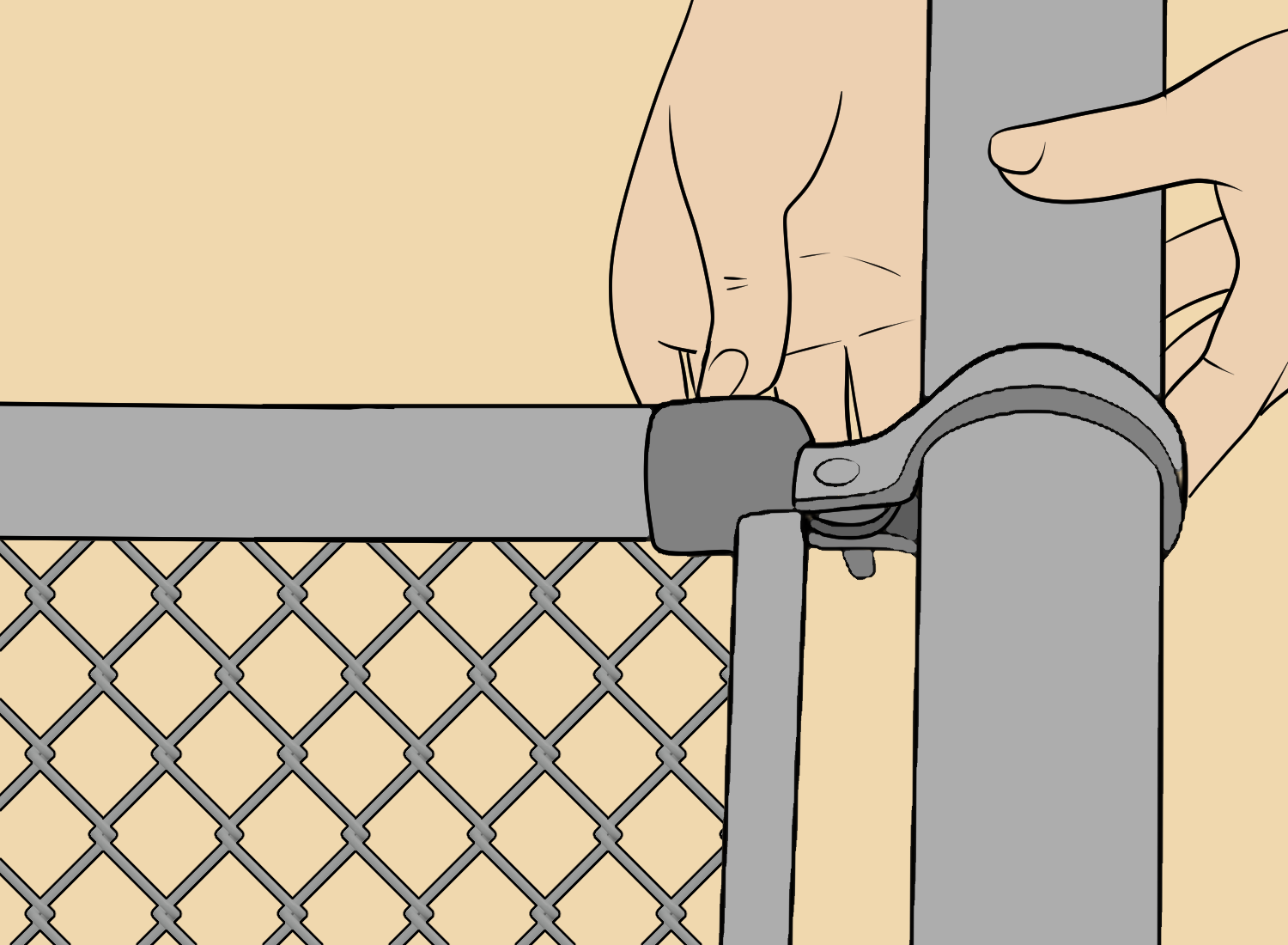
Remove the interior posts by digging them out of the ground. Soak the ground around the post, dig up the ground around the post until you reach the bottom of the concrete plug, and rock it back and forth until you can remove it.
Remove corner and end posts using a pole puller or farm jack by wrapping the chain of the tool around the concrete base, positioning it close to the post base, and pulling back on the lever repeatedly until the post is out of the ground.
By following these steps, you should be able to remove your chain link fence with ease. Ensure that you dispose of all materials safely and appropriately.
Tools needed for chain link fence removal
To ensure the proper removal of the chain link fence and your safety during the whole process, you need to have the necessary tools. Here are the main things you’re going to need for your chain link fence removal:
- Work gloves
- Safety goggles
- Long sleeve shirt
- Work pants
- Fence pliers
- Wrench
- Bolt or wire cutter
- Bungee cords
- Twine tie
- Spade shovel
How to prep for chain link fence removal
Removing a chain link fence can be a DIY project that’s relatively straightforward, but it’s important to prepare properly before you get started. Here are some steps you can take to ensure a successful fence removal:
Clean the area around your fence
Before you start removing the fence, you’ll want to make sure the work area is free of any weeds, vines, or other debris that could get in the way.
If you’re dealing with weeds or plants, make sure you’re wearing gloves to avoid any potential irritants. If there are plants that you want to keep, cover them with a bucket or other protective covering.
Enlist help
Removing a metal fence and its posts can be a physically demanding task, so it’s a good idea to have some extra hands on deck. You might want to ask a friend, family member, or neighbor to help you out.
Having an extra pair of hands will make the job go faster and help prevent unnecessary strain on your body.
Mark your section
To make the process more manageable, it’s a good idea to work in sections. Use a measuring tape to determine the best size for each section and mark off the distance.
This will help you keep track of where you’ve been and where you’re going. We recommend working in increments of about 20 feet if you’re doing the job yourself.
This will make the material easier to carry and help prevent unnecessary strain on your body.
By following these simple steps, you’ll be well on your way to a successful chain link fence removal. And remember, always be mindful of safety while you’re working.
Why you should remove a chain link fence
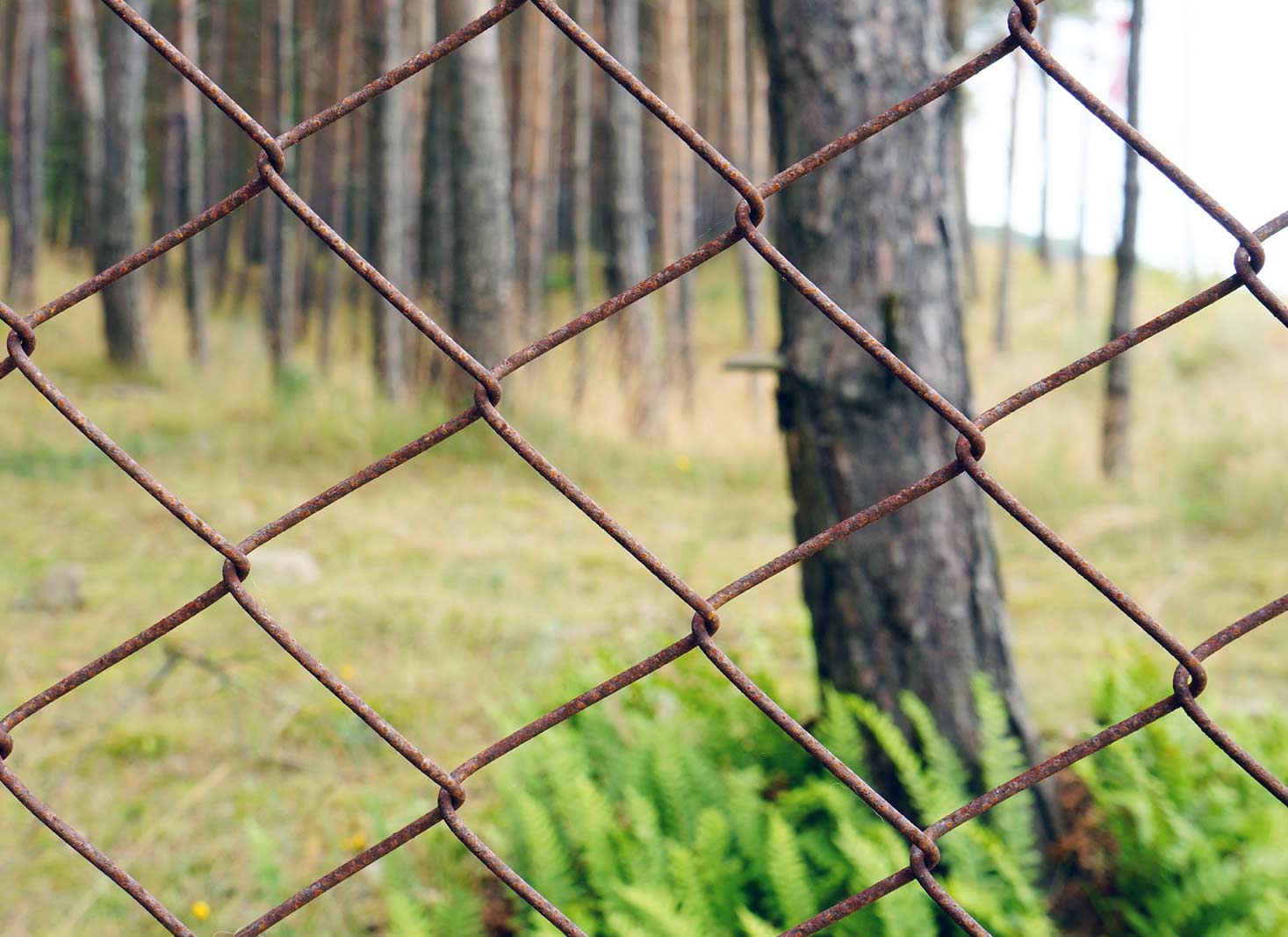
It is imperative that your fence is in its best condition to serve its purpose. However, there are certain situations that lead to reasons why a chain link fence should be removed.
Rust
Chain link fences are typically made of galvanized steel which is bound to rust over time. As rust develops on the surface of the fence, it will weaken its structure, making it more prone to damage.
Rust can also spread and cause further damage to other parts of the fence like the posts and rails. Usually, damages caused by rust are difficult to stop or reverse.
Lack of privacy
Chain link fences have a diamond-shaped mesh design that is perfect for good airflow and visibility, but they are not the best option for privacy. The open design can be a concern for homeowners who want to maintain their privacy.
Some homeowners address this issue by adding privacy slats or planting vines that grow on the fence which can be good, but it can be time-consuming and costly.
Negative impact on property value
An old, unattractive chain link fence will definitely lower the overall value of your property. This can be a turnoff to potential buyers as they can be seen as a hassle or an additional expense for which they would have to pay to replace it.
If your property’s fence is damaged and looks outdated, this could give the impression that the place has not been well-maintained, making it harder to sell your property in a competitive real estate market.
Limited customization
The thing about chain link fences is that they do not offer much opportunity for customization or personalization. Unlike other fence materials like wood or vinyl, you can’t exactly paint or stain a chain link to match your house’s aesthetic.
Limited durability
Chain link fences are not as durable as other fence materials like wood, vinyl, or wrought iron. They are much more vulnerable to extreme weather conditions like high winds or heavy snow.
They are also more likely to sag or warp over time which could lead to a need for frequent repairs or replacement.
Short lifespan
Among the fence materials, chain link fences have the shortest lifespan. With proper care and maintenance, they could last up to 15-20 years. However, they will eventually need to be replaced.
You will know that your chain link fence is reaching the end of its lifespan once it starts to look worn and old.
Tips on removing a chain link fence

Here are some practical tips that can help make the process of removing a chain link fence a bit easier:
- Allow yourself a few days to work on this job if doing it alone. Removing a chain link fence can be a time-consuming task, so it’s important to give yourself enough time to complete the job. It’s best to plan for at least a couple of days, especially if you’re working alone.
- Use protective gear if you need to cut the posts. When cutting the fence posts, it’s important to wear protective gear to prevent injuries. This includes gloves, eye protection, and a dust mask.
- Chain link fences are heavy, so take frequent breaks if needed. Chain link fences can be quite heavy, especially if you’re working with a large fence. It’s important to take frequent breaks to avoid overexerting yourself and risking injury.
- Use multi-use lubricant on rusty hardware that won’t budge. If you encounter any rusty hardware that won’t move, you can try using a multi-use lubricant to help loosen it up. This can make the removal process easier and prevent damage to the fence. Simply apply the lubricant to the rusty hardware and wait a few minutes before attempting to remove it again.







